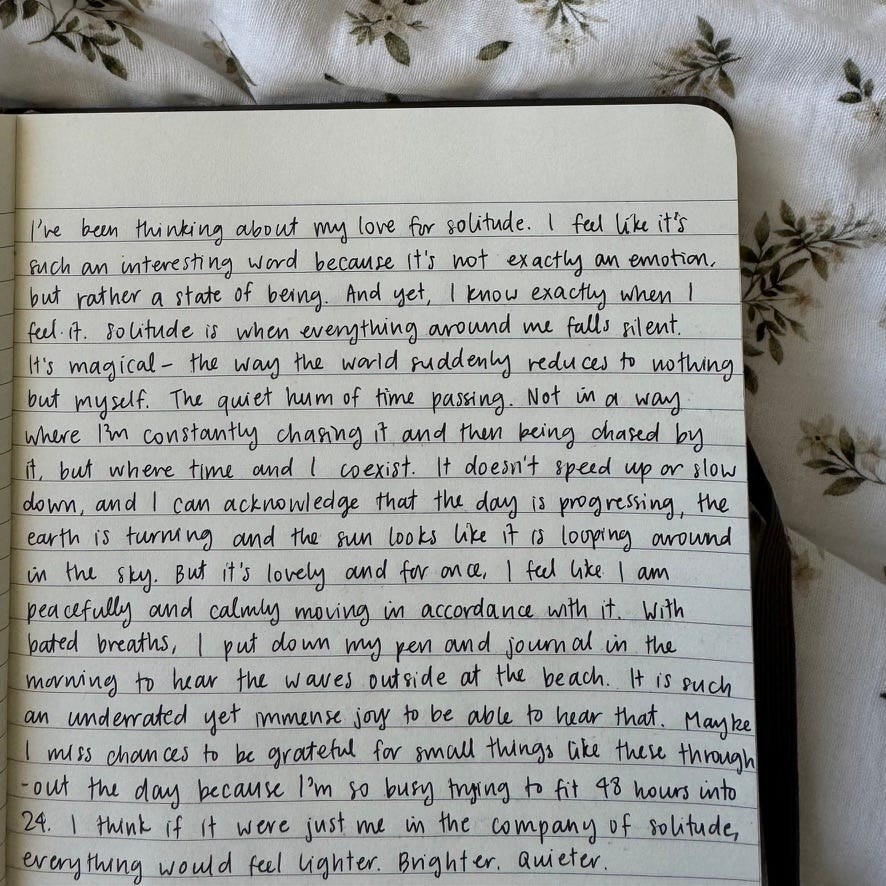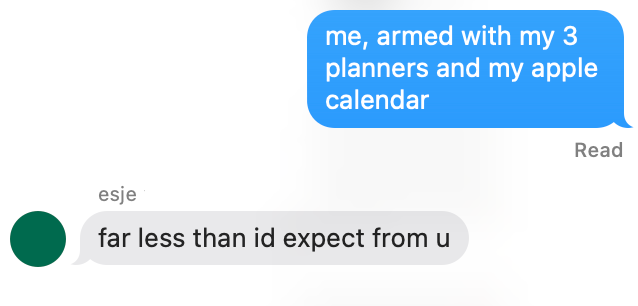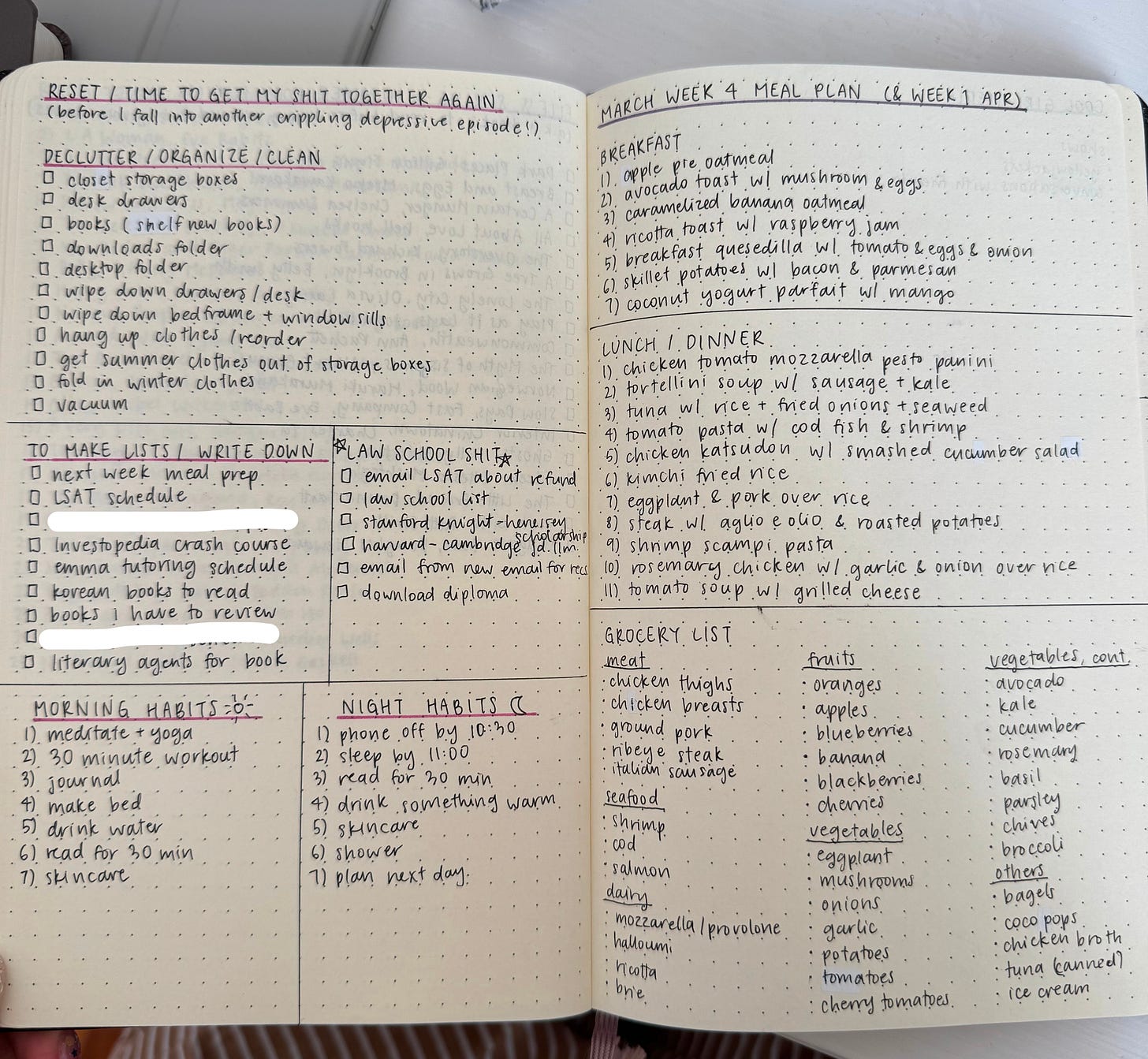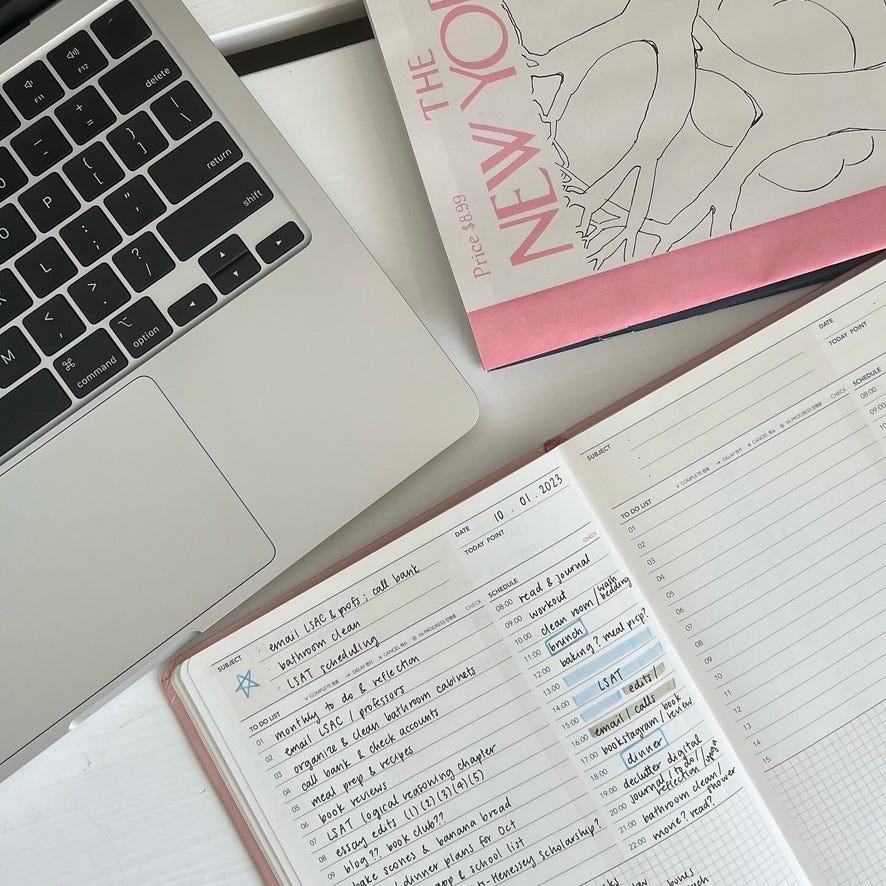how to get smart again: starting a notebook ecosystem
the art of keeping physical notebooks: notebooks, journals, scrapbooks, keepsakes—all the ways i immortalize and handwrite parts of my life, and how to start
[this is part 3 of my summer series for paid subscribers—check out the upcoming posts here. thank you so much for your support!]
I recently read this article by Christine Rosen about the importance of handwriting, not only for the purpose of record-keeping but to maintain cognitive skills and information retention. In the age of rapid digitalization, we are losing one of the longest traditions in every human culture: handwriting. No longer is pen and paper the first two things we reach for when we want to remember something; instead, we instinctively grab our phones and open our notes app. Of course, I love the Apple Notes app. I think it is incredibly useful, but there is something about the physical process of penning down the jumble of thoughts in your brain straight onto a piece of paper using your unique handwriting that is so crucial to who you are as a person.
The diminishing art of handwriting or even the act of putting pen down on paper, can be felt everywhere. From the digitalization of standardized tests to typing everything out in our notes app, we are slowly beginning to lose our tactile functions and repeat the movement of our fingers on a computer keyboard, again and again, carpal tunneling into the abyss. There are proven studies on how handwriting actually improves cognitive function; not only does it keep our brains active, there’s a sort of slowness and mindfulness to handwriting that does not exist when rapidly typing away on a computer. When we were taught how to type, one of the points that was repeatedly emphasized was speed—in my third grade class, typing was always a competition to see who could complete the challenges on the typing practice website the fastest. When we focus on speed, we often forgo the thought process and consciousness in exchange for it.
If I don’t handwrite anything for even a week, the pen begins to feel jarring in my hand, my letters becoming disjointed and jagged and the the usual glide of the ink becoming a foreign concept. Handwriting, like any other physical action, is muscle memory and something that is important to exercise every once in a while. There’s a groundedness to writing by hand that you don’t get when you are typing—instead of seeing everything in copy-and-paste Times New Roman, you’re seeing the thoughts in your brain being transferred into something that you can immortalize and own. Handwriting provides a sense of identity that becomes lost in a sea of fonts when digitalized.
I attended elementary school in the late 2000s, where we had to neatly trace and replicate cursive letters—the ornate sweep of the cursive G, the loopy swirls of the letters J or D—in order to obtain something called a ‘pen license’, which was just permission to write in pen. To eight-year-old me, this was something incredibly coveted yet intimidating, the fact that I was writing with something so permanent (obviously, I had not yet encountered the concept of a digital footprint). When I open my journal from late 2008 to mid 2009, I can see the exact moment I got this pen license. I trace the pen marks embedded onto the yellowing paper, the cursive handwriting now foreign to me. But there is a certain confidence that is tangible even through paper all these years later.
I already wrote about why I journal, but my love for compulsively writing and recording everything goes beyond that. Journaling has been the biggest part of this habit, but I have had trends and phases of different types of notebooks I’ve kept over the years. For part 3 of my “how to get smart again” series, I thought I’d try to write a comprehensive guide and reflection to all the different types of notebooks I’ve kept over the years and why I will continue to do so, despite having a laptop and a smartphone. I’m someone who has to compartmentalize her brain into as many subcategories as possible for it to feel neat and tidy, so I have many notebooks.
I’m going to divide this into four parts: 1) notebooks I use in my daily life (planner for time blocking, catch all notebook, etc), 2) notebooks I use for reading (quote journal, reading journal), 3) miscellaneous notebooks and old notebooks I used to keep but don’t anymore for whatever reason. I also tried to include pages from different years so you can see the evolution of my notebook ecosystem as well!
catch-all notebook
This is my most important notebook and the one I finish the fastest. I always buy a dotted hardcover Moleskine notebook for this—it allows me to have some structure while providing a versatility to formatting each page however I want. I also call this my miscellaneous content notebook, where I plan everything from meal prep for the week to books I want to buy that month, to even planning for any trips. Anything that does not belong in my daily planner (time blocking) or my journal (thoughts) go into this notebook.
As someone who enjoys trying to make everything in her life look pretty and aesthetically pleasing, my one rule for my catch-all notebook is that I should not spend any extra time trying to beautify it. I of course attempt to maintain some semblance of neatness, but I aim to keep it as minimal as possible as the variety of content already sometimes feels disorienting. This notebook is an extension of my brain, so I want to transfer the insides of my brain exactly the way I want to see it (of course, this can and should look different for everyone).










